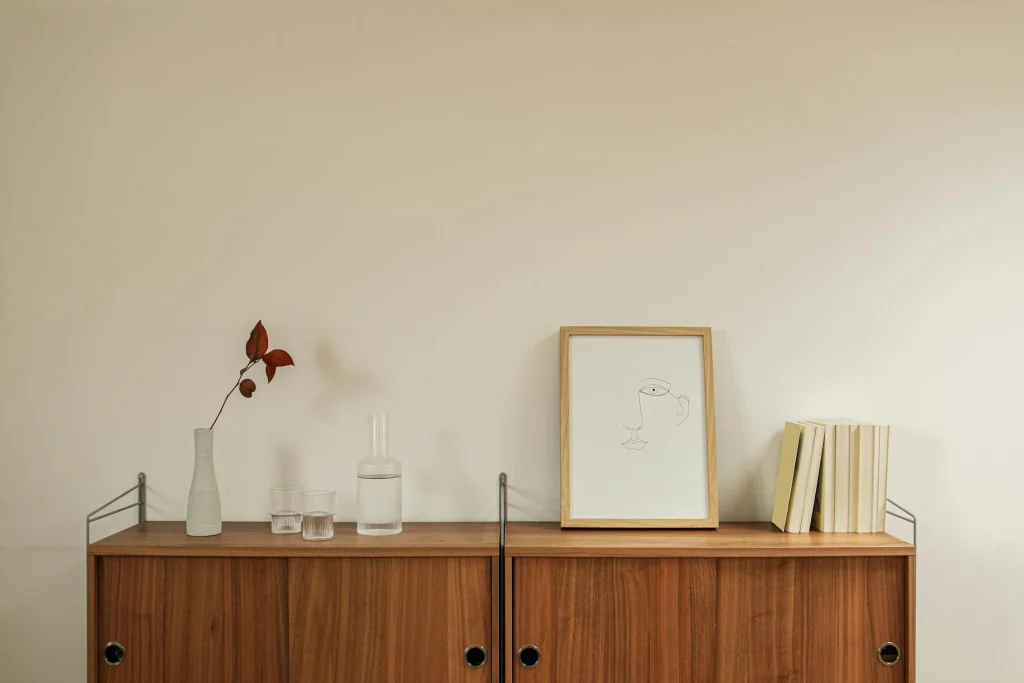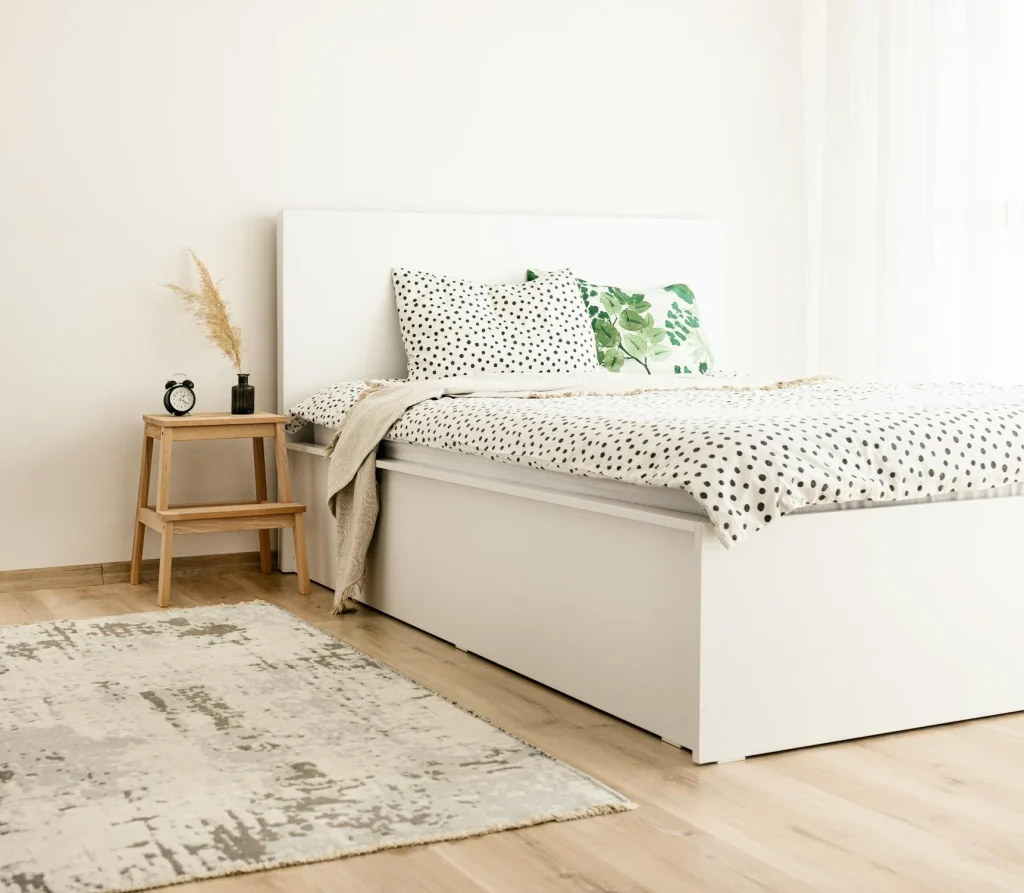Imagine having complete peace wherever you are and always returning home to a neat and orderly environment. It is made possible by minimalist interior design, which combines form and function to create stunning, useful spaces. From just a design aesthetic, minimalism has developed into an ideology that encourages people to be more thoughtful about their possessions and way of life. Gaining an understanding of minimalist design will enable you to improve the atmosphere in your house, regardless of whether you are already a minimalist or not.

Table of Contents
A Quick Introduction to Minimalist Interior Design
Being deliberate with your space to create a neat, organized, and unified area is the goal of minimalistic design. It goes beyond simply getting rid of everything you own. It involves selective reduction, with a deliberate emphasis on components like high-quality materials, muted hues, and thoughtfully designed, oversized furniture that enhances rather than overpowers the design. The minimalist interior design is both aesthetically pleasing and functional. You can make every detail in the space serve a purpose rather than be an accident by embodying these two attributes.
To put it another way, every kind of object in a minimalist room serves a purpose, whether it be to hold the object, offer comfort, or serve as an accessory.
Key Principles of Minimalist Interior Design
When using minimalistic interior design to create a functional space, there are a few guiding principles to adhere to, just like with any other interior design philosophy.
- Less is More: Keep only the essentials and get rid of as many parts as you can.
- The neutral color palette, which includes white, gray, beige, and earth tones, creates a calming and uniform appearance.
- Simple Shape and Clean Lines: Always prioritize functionality and search for low-profile, light-colored ornaments that don’t overpower the space.
- Prioritize quality over quantity: Rather than stuffing a room with numerous items, invest in a few high-quality pieces.
- Furniture with Multiple Uses: Select furniture with multiple uses to make the most of your space without creating extra clutter.
Step-by-Step Guide for the Perfect Minimalist Interior

Start with the rooms that are used the most and work your way down to the ones that aren’t; this includes the kitchen and living room. This technique can help to lessen the intimidating nature of the decluttering process.
Step 1: Eliminate Excess
Eliminate anything superfluous from the area as you get ready to make your space more minimalistic. This is very significant because clutter-free spaces are at the heart of minimalist design principles.
- Choosing Things to Keep
Take the time to go through each area and identify the things that are most helpful to you and that you cannot live without. Anything that doesn’t have a clear “use or love” purpose should be disposed of or stored.
Bonus Tip: Read Marie Kondo’s book, “The Life-Changing Magic of Tidying Up.” For additional inspiration to clean your home, you can watch her TV show on Netflix.
- Give Everything a Home
Organize the things you have decided to keep in your home’s storage spaces, but make sure each item has its own space. Purchase storage containers to hide things so that clutter is not visible.
Step 2: Keep the Color Palette Neutral
Any minimalist space benefits greatly from a well-balanced mix of cool and warm neutrals, which also serve as the foundation for the other decor elements to stand out without competing for attention.
- White and Off-White: These colors are capable of creating an illusion of depth making them a great choice for places that you would like to appear larger and brighter.
- Earth Tones and Soft Grays: These provide comfort and considerable weight to the color scheme without interfering with the overall minimalism of the design
- Accent Colors: Minimalism can still use colors, just not too much. A few accent colors, such as dusty green, light blue, muted gold/silver, or soft brown, will do great in such a theme.
Step 3: Invest in High-Quality Furniture that Serves Multiple Functions
In minimalistic design, the intended function and quality are clearly correlated. By utilizing a variety of multipurpose objects with multiple uses, the goal is to reduce clutter.
- Sofa with Built-in Storage: This is the greatest choice for keeping books, blankets, and even kid’s toys safe without adding to the clutter.
- Extendable Dining Table: This is ideal for cramped quarters that must be set up for hosting visitors but also look neat when not being used.
- Contemporary Bed with Storage: Makes the most of limited space by using headboards with built-in shelves or drawers on the underside of the mattress.
Step 4: Clean Lines

Simple shapes and clean edges are essential for furniture chosen for a minimalistic space because it must be elegant yet simple. Simple, elegant details, as opposed to intricate or striking shapes, are examples of furniture with such designs.
- Rectangular or Square Furniture: These forms are great in proportions and create better balance in a room with fewer decorations which is simpler and cleaner.
- Low-Profile Furniture: When the height of the furniture is low, it gives the illusion of higher ceilings in a space making it feel more open and less constricted.
Losing style or personality is not the goal of minimalist interior design. It involves giving every detail a purpose, restoring function where it is lacking, and establishing order where it ought to be. Even daily activities will become more intentional and efficient as a result of the minimalist movement, which will make the house more serene and aesthetically pleasing. Minimalist design will assist you in creating a clutter-free, uniquely yours, whether you are building a brand-new house or remodeling an existing one.